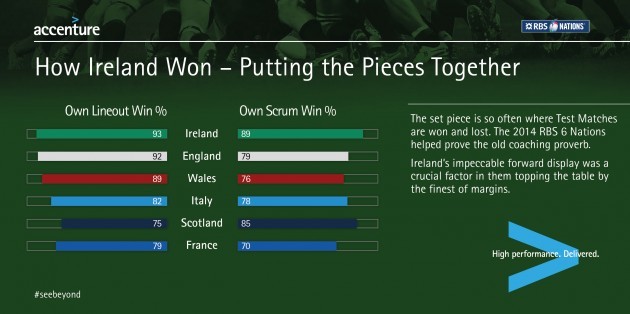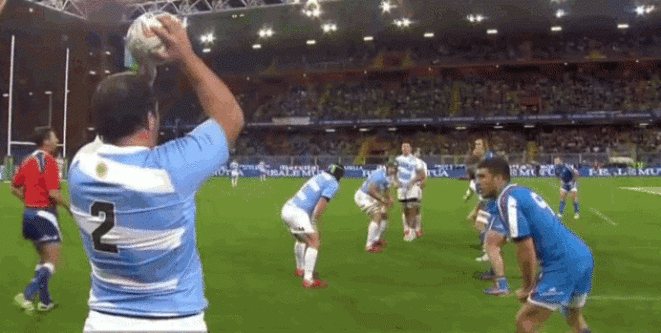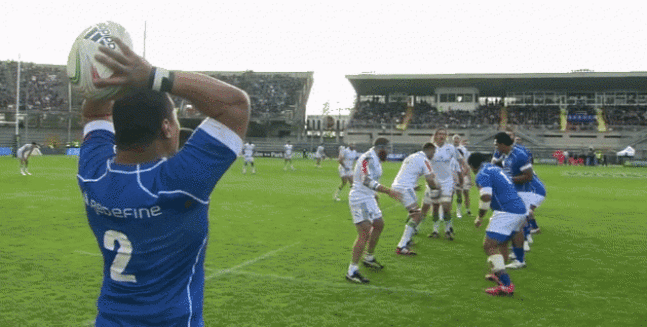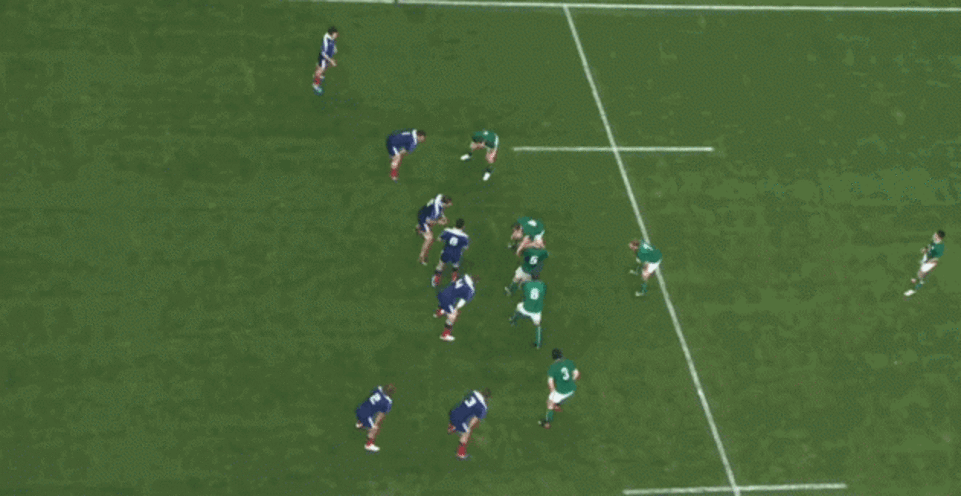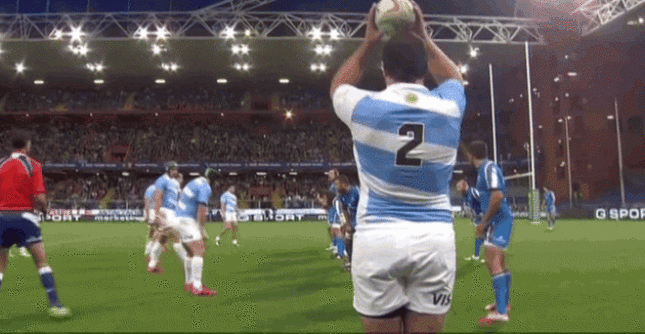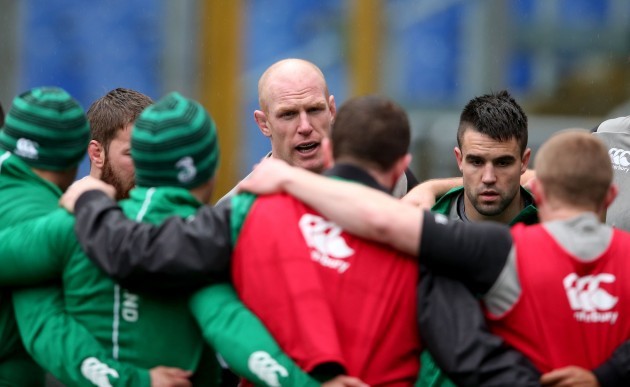IRELAND’S SIX NATIONS success last year was built on a highly-functioning foundation of scrum and line-out.
While Greg Feek’s forwards never obliterated the opposition in the scrum, they did provide quality possession for their backs more often than not. At the lineout, John Plumtree’s charges were the best in the competition.
Accenture, who provide stats and performance analysis for the Six Nations, have provided a timely reminder of Ireland’s excellence at the set-piece with the graphic below, which has been doing the rounds on Twitter.
With 93% success on their own throw and 89% success on their feed to the scrum, Ireland’s forwards delivered statistically the best set-piece in the 2014 Six Nations. Those figures were certainly backed up qualitatively too.
How have they performed since? Has the Irish set-piece continued successfully?
Looking to the November Tests, Ireland’s lineout had a success rate of 76.5% against South Africa, 95% against Georgia and 69.3% against the Australians. Backing those numbers up as reflective of reality in qualitative terms is straight-forward.
Paul O’Connell mentioned after the South Africa and Australia games that he was unhappy with his calling of the lineout, but the ‘failings’ were collective. Johnny Sexton has also since underlined that Ireland had planned far more attacking play with ball in hand in November than they actually were able to carry out.
That, in part, was down to the intermittent issues at the lineout. For forwards coach Simon Easterby, O’Connell, Devin Toner, Peter O’Mahony and the rest of the pack, the challenge is to hit last year’s peak again and even surpass it.
Italy’s competitiveness
First up for O’Connell and co. is a feisty Italian pack who simply adore competing on the opposition throw. It’s rare that Jacques Brunel’s men don’t get into the air when defending lineouts and they’ve had some success in these area in recent times.
We get an example in the clip above, as second row Josh Furno gets up and steals the ball from Argentina back in November. The Australia-born lock is an excellent player and his spring off the ground is particularly useful.
At just 109kg, the Newcastle Falcons lock is a relative lightweight, but his dynamic power compensates for the lack of bulk and his svelte figure allows him to get off the ground quickly and easily be lifted.
The ideal package for stealing ball in the air.
The Italians’ defensive lineout is based around Furno and the inspirational captain Sergio Parisse, and it’s rare that one of that pair does not get off the ground when the opposition is throwing.
“They do have a pretty experienced pack and they do like to get up in the air,” says Ireland lock Devin Toner, “but I think we’re pretty confident in our lineout as well.
“I think we’ve done pretty well over the past year or so and we’ll hope to hold that as an advantage.”
Get them moving
The loss of Quintin Geldenhuys to injury for tomorrow’s meeting may prove to be majorly damaging for the Italians, even if George Biagi is an able replacement.
South Africa native Geldenhuys may not be the world’s greatest jumper himself, but he has a good understanding of lineout mechanics and lifts well after reacting to opposition cues.
Both examples of Italy steals above come when they are in direct one-on-one situations, after little or no movement on the ground from the opposition lineout. That trait is common across the range of Italy’s lineout competitiveness in recent times.
Go up against Parisse and particularly Furno in a direct confrontation and they will beat you in the air. The key for Ireland is going to be clever movement on the ground before Rory Best’s throw.
We get a nice example from last year’s Six Nations in the clip above, as Ireland use a multi-option pod in the middle of the lineout against France. There’s movement to the tail from Toner, before he turns and lifts O’Connell from the back.
It doesn’t seem like much, but the little dummies or ‘sells’ from Ireland were essential to their lineout success in 2014, and something that can leave Italy floundering with their defensive efforts in this particular set-piece.
O’Connell and Easterby will certainly have been driving this over the last number of months as they target improvements and it will be fascinating to note the patterns and movement they use against the Italians tomorrow.
“We alter it for every game we go into,” says Toner. “From November, we were working on new lineouts as well as a new scrummaging set-up we’ve been looking at, so we’re bring a few new things into the game.”
Strength = weakness
Italy’s persistence about getting into the air to compete potentially weakens their maul defence, given the fact that they will immediately be numbers down if the attacking team does retain possession after the throw.
While this hasn’t been a major weakness yet, and the Italians were a little more selective about getting in the air against the Springboks in November, there may be opportunities for Ireland to strike with rapid shift mauls.
The incident above is perhaps not the ideal example, but it does sum up the crux of the point. Italy get into the air at the front, miss the steal and are immediately confronted with a maul at the tail of the lineout.
Initially, they are numbers down, allowing the Pumas to set their maul platform without stifling pressure. Imagine a speeded-up incident like the one above, and we get a sense of how Ireland might be able to take advantage of the Italians’ competition in the air.
Beat them with movement on the deck, win the ball as cleanly as possible and then strike with instant speed in the maul. That may only be possible further out the pitch, rather than in the Italy 22, but Ireland could make big psychological gains in this way.
Give Keats possession
While the mauling battle will be as important as always, the lineout is really about Ireland giving halfbacks Ian Keatley and Conor Murray a solid platform. That applies to the exit strategy, midfield attacks and visits into the red zone.
In November, O’Connell’s lineout wasn’t where he wanted it to be, and the legendary lock will look for 100% against the competitive Italians. In a game where the set-piece has been suggested as the key to the outcome, Ireland’s lineout must deliver.
